233 papers:
 CASE-2015-LengWDC #fuzzy
CASE-2015-LengWDC #fuzzy- Fuzzy sliding mode control for pan-tilt-zoom system driven by ultrasonic motor (XL, SW, YD, YC), pp. 868–873.
 DAC-2015-HanLKNL #framework #multi #optimisation #reduction
DAC-2015-HanLKNL #framework #multi #optimisation #reduction- A global-local optimization framework for simultaneous multi-mode multi-corner clock skew variation reduction (KH, JL, ABK, SN, JL), p. 6.
 DAC-2015-SripadaP #approach #graph
DAC-2015-SripadaP #approach #graph- A timing graph based approach to mode merging (SS, MP), p. 6.
 DATE-2015-BortolottiMBRSB #monitoring #power management
DATE-2015-BortolottiMBRSB #monitoring #power management- An ultra-low power dual-mode ECG monitor for healthcare and wellness (DB, MM, AB, RR, GS, LB), pp. 1611–1616.
 DATE-2015-LeleMB #case study #data flow
DATE-2015-LeleMB #case study #data flow- FP-scheduling for mode-controlled dataflow: a case study (AL, OM, KvB), pp. 1257–1260.
 DATE-2015-ZwergerG #detection #symmetry
DATE-2015-ZwergerG #detection #symmetry- Detection of asymmetric aging-critical voltage conditions in analog power-down mode (MZ, HEG), pp. 1269–1272.
 CHI-2015-LuL #gesture #mobile #performance
CHI-2015-LuL #gesture #mobile #performance- Gesture On: Enabling Always-On Touch Gestures for Fast Mobile Access from the Device Standby Mode (HL, YL), pp. 3355–3364.
 CHI-2015-TungCYWC #automation #interactive #named
CHI-2015-TungCYWC #automation #interactive #named- FlickBoard: Enabling Trackpad Interaction with Automatic Mode Switching on a Capacitive-sensing Keyboard (YCT, TYC, NHY, CW, MYC), pp. 1847–1850.
 ICEIS-v1-2015-CarboneraA #algorithm #category theory #clustering #named
ICEIS-v1-2015-CarboneraA #algorithm #category theory #clustering #named- CBK-Modes: A Correlation-based Algorithm for Categorical Data Clustering (JLC, MA), pp. 603–608.
 ICML-2015-TristanTS #estimation #gpu #performance
ICML-2015-TristanTS #estimation #gpu #performance- Efficient Training of LDA on a GPU by Mean-for-Mode Estimation (JBT, JT, GLSJ), pp. 59–68.
 KDD-2015-ChakrabortyBSPY #classification #framework #learning #named #novel
KDD-2015-ChakrabortyBSPY #classification #framework #learning #named #novel- BatchRank: A Novel Batch Mode Active Learning Framework for Hierarchical Classification (SC, VNB, ARS, SP, JY), pp. 99–108.
 SEKE-2015-NetoSZD #network #using
SEKE-2015-NetoSZD #network #using- Using implications from FCA to represent a two mode network data (SMN, MAJS, LEZ, SMD), pp. 256–259.
 DAC-2014-QiuLX #performance #power management
DAC-2014-QiuLX #performance #power management- Write Mode Aware Loop Tiling for High Performance Low Power Volatile PCM (KQ, QL, CJX), p. 6.
 DATE-2014-AzimCPF #communication #distributed #generative #multi #realtime
DATE-2014-AzimCPF #communication #distributed #generative #multi #realtime- Generation of communication schedules for multi-mode distributed real-time applications (AA, GC, RP, SF), pp. 1–6.
 DATE-2014-JeongOSNS #parametricity #self
DATE-2014-JeongOSNS #parametricity #self- Built-in self-test and characterization of polar transmitter parameters in the loop-back mode (JWJ, SO, SS, VN, MS), pp. 1–6.
 DATE-2014-ParkKK #design #multi #synthesis
DATE-2014-ParkKK #design #multi #synthesis- Mixed allocation of adjustable delay buffers combined with buffer sizing in clock tree synthesis of multiple power mode designs (KP, GK, TK), pp. 1–4.
 DATE-2014-SalunkheMB #analysis #data flow #modelling
DATE-2014-SalunkheMB #analysis #data flow #modelling- Mode-Controlled Dataflow based modeling & analysis of a 4G-LTE receiver (HS, OM, KvB), pp. 1–4.
 VLDB-2014-YuYWLC #big data #classification #design #detection #power management
VLDB-2014-YuYWLC #big data #classification #design #detection #power management- Big Data Small Footprint: The Design of A Low-Power Classifier for Detecting Transportation Modes (MCY, TY, SCW, CJL, EYC), pp. 1429–1440.
 AFL-2014-FernauFH #distributed #finite #hybrid
AFL-2014-FernauFH #distributed #finite #hybrid- Cooperating Distributed Grammar Systems of Finite Index Working in Hybrid Modes (HF, RF, MH), pp. 246–260.
 ICML-c2-2014-PachecoZBS
ICML-c2-2014-PachecoZBS- Preserving Modes and Messages via Diverse Particle Selection (JP, SZ, MJB, EBS), pp. 1152–1160.
 HPCA-2014-LoK #manycore
HPCA-2014-LoK #manycore- Dynamic management of TurboMode in modern multi-core chips (DL, CK), pp. 603–613.
 CAV-2014-ChowdhuryJGD #monitoring #policy #privacy #runtime
CAV-2014-ChowdhuryJGD #monitoring #policy #privacy #runtime- Temporal Mode-Checking for Runtime Monitoring of Privacy Policies (OC, LJ, DG, AD), pp. 131–149.
 CBSE-2013-YinQCH #component
CBSE-2013-YinQCH #component- Mode switch handling for the ProCom component model (HY, HQ, JC, HH), pp. 13–22.
 CASE-2013-IsmailH #3d #anti #higher-order #using
CASE-2013-IsmailH #3d #anti #higher-order #using- Trajectory tracking and anti-sway control of three-dimensional offshore boom cranes using second-order sliding modes (RMTRI, QPH), pp. 996–1001.
 DAC-2013-AgrawalRHSPC #architecture #clustering #framework #multi
DAC-2013-AgrawalRHSPC #architecture #clustering #framework #multi- Early exploration for platform architecture instantiation with multi-mode application partitioning (PA, PR, MH, NS, LVdP, FC), p. 8.
 DAC-2013-Flynn #power management
DAC-2013-Flynn #power management- Power gating applied to MP-SoCs for standby-mode power management (DF), p. 5.
 DAC-2013-TangAP #communication #configuration management #multi #pipes and filters
DAC-2013-TangAP #communication #configuration management #multi #pipes and filters- Reconfigurable pipelined coprocessor for multi-mode communication transmission (LT, JAA, SP), p. 8.
 DATE-2013-FarisiBCS #automation #implementation #multi
DATE-2013-FarisiBCS #automation #implementation #multi- An automatic tool flow for the combined implementation of multi-mode circuits (BAF, KB, JMPC, DS), pp. 821–826.
 DATE-2013-KahngKP #power management #reduction
DATE-2013-KahngKP #power management #reduction- Active-mode leakage reduction with data-retained power gating (ABK, SK, BP), pp. 1209–1214.
 DATE-2013-LorenteVSPCLD #power management #ram
DATE-2013-LorenteVSPCLD #power management #ram- Combining RAM technologies for hard-error recovery in L1 data caches working at very-low power modes (VL, AV, JS, SP, RC, PL, JD), pp. 83–88.
 DATE-2013-NegreanKE #analysis #manycore
DATE-2013-NegreanKE #analysis #manycore- Timing analysis of multi-mode applications on AUTOSAR conform multi-core systems (MN, SK, RE), pp. 302–307.
 ICDAR-2013-ShivramRSG #dataset #named
ICDAR-2013-ShivramRSG #dataset #named- IBM_UB_1: A Dual Mode Unconstrained English Handwriting Dataset (AS, CR, SS, VG), pp. 13–17.
 SEFM-2013-SuryadevaraSMP #behaviour #using #verification
SEFM-2013-SuryadevaraSMP #behaviour #using #verification- Verifying MARTE/CCSL Mode Behaviors Using UPPAAL (JS, CCS, FM, PP), pp. 1–15.
 CHI-2013-OfekIS
CHI-2013-OfekIS- Reducing disruption from subtle information delivery during a conversation: mode and bandwidth investigation (EO, STI, KS), pp. 3111–3120.
 CHI-2013-SerranoLG #gesture
CHI-2013-SerranoLG #gesture- Bezel-Tap gestures: quick activation of commands from sleep mode on tablets (MS, EL, YG), pp. 3027–3036.
 DHM-SET-2013-MeryS
DHM-SET-2013-MeryS- Ideal Mode Selection of a Cardiac Pacing System (DM, NKS), pp. 258–267.
 ICEIS-v3-2013-SzirbikB #architecture #network
ICEIS-v3-2013-SzirbikB #architecture #network- Discovering the EIS Architecture that Supports Hub-and-Spoke Freight Transportation Networks Operating in a Cross Dock Mode (NBS, PB), pp. 388–395.
 ICML-c1-2013-ChenK #adaptation #learning #optimisation
ICML-c1-2013-ChenK #adaptation #learning #optimisation- Near-optimal Batch Mode Active Learning and Adaptive Submodular Optimization (YC, AK), pp. 160–168.
 ICML-c3-2013-ChattopadhyayFDPY #learning
ICML-c3-2013-ChattopadhyayFDPY #learning- Joint Transfer and Batch-mode Active Learning (RC, WF, ID, SP, JY), pp. 253–261.
 KDD-2013-WangY #learning #query
KDD-2013-WangY #learning #query- Querying discriminative and representative samples for batch mode active learning (ZW, JY), pp. 158–166.
 KDIR-KMIS-2013-Ibarra-SanchezPO #analysis #case study #risk management #using
KDIR-KMIS-2013-Ibarra-SanchezPO #analysis #case study #risk management #using- Hospital Risk Management using Healthcare Failure Mode and Effects Analysis — A Case Study on Ventilators Whithin an Intensive Care Unit (MAIS, ABPA, MROP), pp. 328–335.
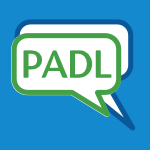 PADL-2013-0004R #implementation #on the #performance
PADL-2013-0004R #implementation #on the #performance- On the Efficient Implementation of Mode-Directed Tabling (JS, RR), pp. 141–156.
 RE-2013-DietrichA #interface #requirements
RE-2013-DietrichA #interface #requirements- A mode-based pattern for feature requirements, and a generic feature interface (DD, JMA), pp. 82–91.
 SAC-2013-SrivastavaSM #clustering #graph #using
SAC-2013-SrivastavaSM #clustering #graph #using- Text clustering using one-mode projection of document-word bipartite graphs (AS, AJS, EEM), pp. 927–932.
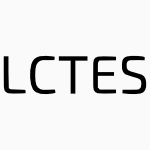 LCTES-2013-LiJZHX #compilation #performance #power management
LCTES-2013-LiJZHX #compilation #performance #power management- Compiler directed write-mode selection for high performance low power volatile PCM (QL, LJ, YZ, YH, CJX), pp. 101–110.
 CBSE-2012-PopPOMB #co-evolution #component #network
CBSE-2012-PopPOMB #co-evolution #component #network- Property networks allowing oracle-based mode-change propagation in hierarchical components (TP, FP, MO, MM, TB), pp. 93–102.
 CBSE-2012-YinCH #component #multi #towards
CBSE-2012-YinCH #component #multi #towards- Towards mode switch handling in component-based multi-mode systems (HY, JC, HH), pp. 183–188.
 CASE-2012-CaoZF #approach #mobile #search-based
CASE-2012-CaoZF #approach #mobile #search-based- Point stabilization of mobile robots by genetic sliding mode approach with neural dynamics model on uneven surface (ZC, YZ, YF), pp. 1150–1155.
 CASE-2012-IsmailDH #higher-order #using
CASE-2012-IsmailDH #higher-order #using- Observer-based trajectory tracking for a class of underactuated Lagrangian systems using higher-order sliding modes (RMTRI, TDN, QPH), pp. 1204–1209.
 CASE-2012-KhanhTHH #fuzzy
CASE-2012-KhanhTHH #fuzzy- FPGA-based fuzzy sliding mode control for sensorless PMSM drive (QNK, TDN, QNH, QPH), pp. 172–177.
 CASE-2012-QuangR #approach #implementation
CASE-2012-QuangR #approach #implementation- Implementation of Time Domain Passivity Approach on Rate-Mode bilateral teleoperation (HVQ, JHR), pp. 846–850.
 DATE-2012-NasseryO
DATE-2012-NasseryO- An analytical technique for characterization of transceiver IQ imbalances in the loop-back mode (AN, SO), pp. 1084–1089.
 DATE-2012-PourshaghaghiFG
DATE-2012-PourshaghaghiFG- Sliding-Mode Control to Compensate PVT Variations in dual core systems (HRP, HF, JPdG), pp. 1048–1053.
 ICPR-2012-HardingHCLC #automation #detection #image
ICPR-2012-HardingHCLC #automation #detection #image- Automated detection of skeletal muscle twitches from B-mode ultrasound images: An application to motor neuron disease (PJH, EFHT, RC, IL, NC), pp. 2630–2633.
 ICPR-2012-SunLI #quality #scalability
ICPR-2012-SunLI #quality #scalability- A pixel-domain mode-mapping based SVC-to-AVC transcoder with coarse grain quality scalability (LS, ZL, TI), pp. 939–942.
 ICPR-2012-WidhalmNB #detection #smarttech
ICPR-2012-WidhalmNB #detection #smarttech- Transport mode detection with realistic Smartphone sensor data (PW, PN, NB), pp. 573–576.
 ICPR-2012-YangLZC #image #learning #multi #retrieval
ICPR-2012-YangLZC #image #learning #multi #retrieval- Multi-view learning with batch mode active selection for image retrieval (WY, GL, LZ, EC), pp. 979–982.
 KDD-2012-ChattopadhyayWFDPY #probability
KDD-2012-ChattopadhyayWFDPY #probability- Batch mode active sampling based on marginal probability distribution matching (RC, ZW, WF, ID, SP, JY), pp. 741–749.
 REFSQ-2012-RaspotnigO #analysis #case study #diagrams #sequence chart
REFSQ-2012-RaspotnigO #analysis #case study #diagrams #sequence chart- Supporting Failure Mode and Effect Analysis: A Case Study with Failure Sequence Diagrams (CR, ALO), pp. 117–131.
 SAC-2012-SwainCNB #analysis #markov #performance #using
SAC-2012-SwainCNB #analysis #markov #performance #using- Performance analysis of IEEE 802.11 IBSS power save mode using a discrete-time markov model (PS, SC, SN, PB), pp. 631–633.
 CBSE-2011-DistefanoFGM #analysis #composition #multi #reliability #workflow
CBSE-2011-DistefanoFGM #analysis #composition #multi #reliability #workflow- A compositional method for reliability analysis of workflows affected by multiple failure modes (SD, AF, CG, RM), pp. 149–158.
 CASE-2011-BohlouliMBK #adaptation #fuzzy #mobile
CASE-2011-BohlouliMBK #adaptation #fuzzy #mobile- Adaptive fuzzy sliding mode controller for Wheeled Mobile Robots (RB, YM, RB, JK), pp. 285–290.
 CASE-2011-Gomez-GutierrezCRRG #linear
CASE-2011-Gomez-GutierrezCRRG #linear- Sliding mode observer for Switched Linear Systems (DGG, SC, ART, JJRL, SDG), pp. 725–730.
 CASE-2011-SekerZ
CASE-2011-SekerZ- A new sliding mode controller for the DC to DC flyback converter (MS, EZ), pp. 720–724.
 DAC-2011-CevreroRSBIL #library #logic #power management #standard
DAC-2011-CevreroRSBIL #library #logic #power management #standard- Power-gated MOS current mode logic (PG-MCML): a power aware DPA-resistant standard cell library (AC, FR, MS, SB, PI, YL), pp. 1014–1019.
 DAC-2011-HuangYX #multi #scheduling
DAC-2011-HuangYX #multi #scheduling- Customer-aware task allocation and scheduling for multi-mode MPSoCs (LH, RY, QX), pp. 387–392.
 DAC-2011-WalterKCK #capacity #multi
DAC-2011-WalterKCK #capacity #multi- Capacity optimized NoC for multi-mode SoC (IW, EK, IC, SK), pp. 942–947.
 DATE-2011-MistryAFH #power management
DATE-2011-MistryAFH #power management- Sub-clock power-gating technique for minimising leakage power during active mode (JNM, BMAH, DF, SH), pp. 106–111.
 DATE-2011-VatajeluF #analysis #in memory #memory management #robust
DATE-2011-VatajeluF #analysis #in memory #memory management #robust- Robustness analysis of 6T SRAMs in memory retention mode under PVT variations (EIV, JF), pp. 980–985.
 DRR-2011-EynardME #corpus #framework #navigation
DRR-2011-EynardME #corpus #framework #navigation- A framework to improve digital corpus uses: image-mode navigation (LE, VM, HE), pp. 1–10.
 HT-2011-JonesA #tool support
HT-2011-JonesA #tool support- Many views, many modes, many tools & one structure (WJ, KMA), pp. 113–122.
 ICDAR-2011-WeberLSSSD #detection #evaluation #interface #multi #online
ICDAR-2011-WeberLSSSD #detection #evaluation #interface #multi #online- MCS for Online Mode Detection: Evaluation on Pen-Enabled Multi-touch Interfaces (MW, ML, YTHS, CS, FS, AD), pp. 957–961.
 CHI-2011-KellyG #interactive
CHI-2011-KellyG #interactive- An examination of two delivery modes for interactive search system experiments: remote and laboratory (DK, KG), pp. 1531–1540.
 CHI-2011-OzencF #social #social media
CHI-2011-OzencF #social #social media- Life “modes” in social media (FKO, SF), pp. 561–570.
 HCI-MIIE-2011-LuMLW #interactive #pervasive #research
HCI-MIIE-2011-LuMLW #interactive #pervasive #research- Research of Passive Mode Interaction in Pervasive Computing (YL, KM, ZL, KW), pp. 220–229.
 ICEIS-v1-2011-XiaoZTZC #network
ICEIS-v1-2011-XiaoZTZC #network- A New Chinese Public Welfare Operation Mode based on Value Network Model (DX, ZZ, ZT, JZ, FC), pp. 510–514.
 ICEIS-v2-2011-LuoL #enterprise #research
ICEIS-v2-2011-LuoL #enterprise #research- Research on the Cost Management Mode of Chinese Real Estate Enterprises (JL, YL), pp. 345–350.
 ICEIS-v3-2011-HuangZYZC
ICEIS-v3-2011-HuangZYZC- Neural Network-based Procurement Mode Selection of MRO Materials (ZH, YZ, HY, YZ, LC), pp. 523–526.
 ASPLOS-2011-DengMRWB #in memory #memory management #named #power management
ASPLOS-2011-DengMRWB #in memory #memory management #named #power management- MemScale: active low-power modes for main memory (QD, DM, LER, TFW, RB), pp. 225–238.
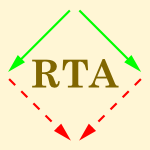 RTA-2011-Bahr #convergence #graph grammar
RTA-2011-Bahr #convergence #graph grammar- Modes of Convergence for Term Graph Rewriting (PB), pp. 139–154.
 CBSE-2010-FilieriGGM #analysis #component #multi #reliability
CBSE-2010-FilieriGGM #analysis #component #multi #reliability- Reliability Analysis of Component-Based Systems with Multiple Failure Modes (AF, CG, VG, RM), pp. 1–20.
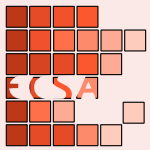 ECSA-2010-SuYZ #architecture #specification
ECSA-2010-SuYZ #architecture #specification- An ADL-Approach to Specifying and Analyzing Centralized-Mode Architectural Connection (GS, MY, CZ), pp. 8–23.
 CASE-2010-IslamL #distributed #hybrid
CASE-2010-IslamL #distributed #hybrid- A distributed hybrid sliding mode control system for a class of nonlinear mechanical systems (SI, PXL), pp. 356–361.
 DAC-2010-CabeQS #power management
DAC-2010-CabeQS #power management- Stacking SRAM banks for ultra low power standby mode operation (ACC, ZQ, MRS), pp. 699–704.
 DAC-2010-HsuPH #approach #data flow #modelling #physics #simulation
DAC-2010-HsuPH #approach #data flow #modelling #physics #simulation- A mixed-mode vector-based dataflow approach for modeling and simulating LTE physical layer (CJH, JLP, FJH), pp. 18–23.
 DAC-2010-SeomunSS #implementation #power management #synthesis
DAC-2010-SeomunSS #implementation #power management #synthesis- Synthesis and implementation of active mode power gating circuits (JS, IS, YS), pp. 487–492.
 DAC-2010-ZhangCTL #modelling #multi #performance #scalability #towards
DAC-2010-ZhangCTL #modelling #multi #performance #scalability #towards- Toward efficient large-scale performance modeling of integrated circuits via multi-mode/multi-corner sparse regression (WZ, THC, MYT, XL), pp. 897–902.
 DATE-2010-EconomakosXKS #component #configuration management #synthesis
DATE-2010-EconomakosXKS #component #configuration management #synthesis- Construction of dual mode components for reconfiguration aware high-level synthesis (GE, SX, IK, DS), pp. 1357–1360.
 DATE-2010-HuangX10a #constraints #energy #multi #reliability #scheduling
DATE-2010-HuangX10a #constraints #energy #multi #reliability #scheduling- Energy-efficient task allocation and scheduling for multi-mode MPSoCs under lifetime reliability constraint (LH, QX), pp. 1584–1589.
 DATE-2010-JungP #network #nondeterminism #optimisation #power management
DATE-2010-JungP #network #nondeterminism #optimisation #power management- Optimizing the power delivery network in dynamically voltage scaled systems with uncertain power mode transition times (HJ, MP), pp. 351–356.
 DATE-2010-LazzariFMC #multi
DATE-2010-LazzariFMC #multi- A new quaternary FPGA based on a voltage-mode multi-valued circuit (CL, PFF, JM, LC), pp. 1797–1802.
 DATE-2010-LungZCC #optimisation
DATE-2010-LungZCC #optimisation- Clock skew optimization considering complicated power modes (CLL, ZYZ, CHC, SCC), pp. 1474–1479.
 DATE-2010-ShafiqueMH #adaptation #complexity #reduction #using #video
DATE-2010-ShafiqueMH #adaptation #complexity #reduction #using #video- An HVS-based Adaptive Computational Complexity Reduction Scheme for H.264/AVC video encoder using Prognostic Early Mode Exclusion (MS, BM, JH), pp. 1713–1718.
 ICALP-v1-2010-GreveJLT #approximate #bound
ICALP-v1-2010-GreveJLT #approximate #bound- Cell Probe Lower Bounds and Approximations for Range Mode (MG, AGJ, KDL, JT), pp. 605–616.
 CIKM-2010-WongWWC #database #scalability
CIKM-2010-WongWWC #database #scalability- Pattern discovery for large mixed-mode database (AKCW, BW, GPKW, KCCC), pp. 859–868.
 ICML-2010-LiuY #graph #robust
ICML-2010-LiuY #graph #robust- Robust Graph Mode Seeking by Graph Shift (HL, SY), pp. 671–678.
 SEKE-2010-WangPACC #analysis #automation #process
SEKE-2010-WangPACC #analysis #automation #process- An Automatic Failure Mode and Effect Analysis Technique for Processes Defined in the Little-JIL Process Definition Language (DW, JP, GSA, LAC, BC), pp. 765–770.
 SEKE-2010-Yeh #animation #human-computer #interactive #learning
SEKE-2010-Yeh #animation #human-computer #interactive #learning- The effects of human-computer interaction modes for weak learners in an animation learning environment (YFY), pp. 18–23.
 SAC-2010-HarshN #approach #architecture #independence #multi #network
SAC-2010-HarshN #approach #architecture #independence #multi #network- Mode independent session directory service architecture: a unified approach for ASM and SSM multicast networks (PH, REN), pp. 647–654.
 SAC-2010-Niu #energy #realtime #scalability
SAC-2010-Niu #energy #realtime #scalability- Energy-aware dual-mode voltage scaling for weakly hard real-time systems (LN), pp. 321–325.
 FSE-2010-Johnson10a #research
FSE-2010-Johnson10a #research- Avoiding the classic catastrophic computer science failure mode: 2010 acm sigsoft outstanding research award talk (REJ), pp. 5–6.
 FSE-2010-Shokry #behaviour #synthesis #towards #using
FSE-2010-Shokry #behaviour #synthesis #towards #using- Towards behavior elaboration and synthesis using modes (HS), pp. 349–352.
 DAC-2009-PlishkerSB #data flow #effectiveness #scheduling
DAC-2009-PlishkerSB #data flow #effectiveness #scheduling- Mode grouping for more effective generalized scheduling of dynamic dataflow applications (WP, NS, SSB), pp. 923–926.
 DAC-2009-SamiiEPC #embedded #multi #quality #synthesis
DAC-2009-SamiiEPC #embedded #multi #quality #synthesis- Quality-driven synthesis of embedded multi-mode control systems (SS, PE, ZP, AC), pp. 864–869.
 DATE-2009-BordeHP #architecture #component #configuration management
DATE-2009-BordeHP #architecture #component #configuration management- Mode-based reconfiguration of critical software component architectures (EB, GH, LP), pp. 1160–1165.
 DATE-2009-DabiriVPS #energy #realtime
DATE-2009-DabiriVPS #energy #realtime- Energy minimization for real-time systems with non-convex and discrete operation modes (FD, AV, MP, MS), pp. 1416–1421.
 DATE-2009-StoimenovPT #realtime #reliability #scheduling
DATE-2009-StoimenovPT #realtime #reliability #scheduling- Reliable mode changes in real-time systems with fixed priority or EDF scheduling (NS, SP, LT), pp. 99–104.
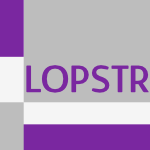 LOPSTR-2009-CzenkoE #flexibility #using
LOPSTR-2009-CzenkoE #flexibility #using- LP with Flexible Grouping and Aggregates Using Modes (MC, SE), pp. 67–81.
 SAC-2009-GohKCC #analysis #performance #scalability #video
SAC-2009-GohKCC #analysis #performance #scalability #video- Fast mode decision for scalable video coding based on neighboring macroblock analysis (GG, JK, MC, KC), pp. 1845–1846.
 ASPLOS-2009-WellsCS #manycore #reliability
ASPLOS-2009-WellsCS #manycore #reliability- Mixed-mode multicore reliability (PMW, KC, GSS), pp. 169–180.
 CASE-2008-HajiAGDM #multi #resource management #scheduling
CASE-2008-HajiAGDM #multi #resource management #scheduling- An improved multi-mode resource allocation and project scheduling model (MH, LA, PG, HD, MM), pp. 365–370.
 DAC-2008-HanSE #3d #equation #modelling
DAC-2008-HanSE #3d #equation #modelling- Electric field integral equation combined with cylindrical conduction mode basis functions for electrical modeling of three-dimensional interconnects (KJH, MS, EE), pp. 421–424.
 DATE-2008-ElmqvistN #analysis #component #incremental #tool support
DATE-2008-ElmqvistN #analysis #component #incremental #tool support- Tool Support for Incremental Failure Mode and Effects Analysis of Component-Based Systems (JE, SNT), pp. 921–927.
 DATE-2008-MorgadoRR #configuration management #multi #standard
DATE-2008-MorgadoRR #configuration management #multi #standard- A Triple-Mode Reconfigurable Sigma-Delta Modulator for Multi-Standard Wireless Applications (AM, RdR, JMdlR), pp. 862–867.
 SAS-2008-RuggieriM #constraints #linear #source code #type system
SAS-2008-RuggieriM #constraints #linear #source code #type system- Typing Linear Constraints for Moding CLP() Programs (SR, FM), pp. 128–143.
 DLT-2008-Csuhaj-VarjuDV
DLT-2008-Csuhaj-VarjuDV- Some New Modes of Competence-Based Derivations in CD Grammar Systems (ECV, JD, GV), pp. 228–239.
 KDD-2008-TangLZN #community #evolution #multi #network
KDD-2008-TangLZN #community #evolution #multi #network- Community evolution in dynamic multi-mode networks (LT, HL, JZ, ZN), pp. 677–685.
 MoDELS-2008-ObataI #modelling #validation
MoDELS-2008-ObataI #modelling #validation- General Mode Controller for Software on Artificial Satellite with Model-Based Validation Tool (TO, TI), pp. 889–895.
 SAC-2008-MartinsB #on the #realtime
SAC-2008-MartinsB #on the #realtime- On the meaning of modes in uniprocessor real-time systems (PM, AB), pp. 324–325.
 SAC-2008-SchobelP #case study #clustering #cpu #kernel #research #scheduling #using
SAC-2008-SchobelP #case study #clustering #cpu #kernel #research #scheduling #using- Kernel-mode scheduling server for CPU partitioning: a case study using the Windows research kernel (MS, AP), pp. 1700–1704.
 DAC-2007-SeokHSB #analysis #design #optimisation
DAC-2007-SeokHSB #analysis #design #optimisation- Analysis and Optimization of Sleep Modes in Subthreshold Circuit Design (MS, SH, DS, DB), pp. 694–699.
 ICDAR-2007-WillemsV #approach #detection #interactive #network
ICDAR-2007-WillemsV #approach #detection #interactive #network- A Bayesian Network Approach to Mode Detection for Interactive Maps (DW, LV), pp. 869–873.
 DHM-2007-KuboTA
DHM-2007-KuboTA- Two Vibration Modes of a Human Body Sitting on a Car Seat- The Relationship Between Riding Discomfort Affected by the Material Properties of the Seat Cushion and the Two Vibration Modes (MK, FT, HA), pp. 894–903.
 OCSC-2007-ChenY07a #collaboration #design #difference #industrial #learning
OCSC-2007-ChenY07a #collaboration #design #difference #industrial #learning- The Differences Between the Influences of Synchronous and Asynchronous Modes on Collaborative Learning Project of Industrial Design (WC, MY), pp. 275–283.
 OCSC-2007-GonzalezGC #development
OCSC-2007-GonzalezGC #development- Fostering Knowledge Mode Conversion in New Product Development Environment (EGM, DAGZ, MC), pp. 352–361.
 ICEIS-DISI-2007-Brunetto #information management #integration
ICEIS-DISI-2007-Brunetto #information management #integration- Information systems integration during mergers — integration modes typology and integration paths (GB), pp. 71–77.
 SEKE-2007-GuD #component #embedded #execution #integration #multi
SEKE-2007-GuD #component #embedded #execution #integration #multi- QoS-Optimized Integration of Embedded Software Components with Multiple Modes of Execution (ZG, QD), pp. 320–325.
 POPL-2007-PearlmutterS #higher-order #lazy evaluation #multi
POPL-2007-PearlmutterS #higher-order #lazy evaluation #multi- Lazy multivariate higher-order forward-mode AD (BAP, JMS), pp. 155–160.
 CASE-2006-TranNKHF #approach #low level #robust
CASE-2006-TranNKHF #approach #low level #robust- Sliding Mode-PID Approach for Robust Low-level Control of a UGV (THT, MTN, NMK, QPH, GF), pp. 672–677.
 CASE-2006-ZhangYZ #fault tolerance
CASE-2006-ZhangYZ #fault tolerance- Sliding Mode Control with Sensor Fault Tolerant for Electronic Throttle (PZ, CY, JZ), pp. 568–573.
 DATE-2006-AlmukhaizimM #concurrent #detection #fault
DATE-2006-AlmukhaizimM #concurrent #detection #fault- Berger code-based concurrent error detection in asynchronous burst-mode machines (SA, YM), pp. 71–72.
 DATE-DF-2006-ChengL #multi
DATE-DF-2006-ChengL #multi- A fast-lock mixed-mode DLL with wide-range operation and multiphase outputs (KHC, YLL), pp. 178–182.
 CHI-2006-HinckleyGBSAC #multi
CHI-2006-HinckleyGBSAC #multi- The springboard: multiple modes in one spring-loaded control (KH, FG, PB, RS, MA, EC), pp. 181–190.
 CIKM-2006-AnhM #query
CIKM-2006-AnhM #query- Pruning strategies for mixed-mode querying (VNA, AM), pp. 190–197.
 ICML-2006-HoiJZL #classification #image #learning
ICML-2006-HoiJZL #classification #image #learning- Batch mode active learning and its application to medical image classification (SCHH, RJ, JZ, MRL), pp. 417–424.
 ICPR-v1-2006-ArandjelovicC #classification #set #using
ICPR-v1-2006-ArandjelovicC #classification #set #using- Face Set Classification using Maximally Probable Mutual Modes (OA, RC), pp. 511–514.
 ICPR-v1-2006-HouZS #estimation #matrix
ICPR-v1-2006-HouZS #estimation #matrix- Estimation of the Fundamental Matrix Based on EV Mode (TH, FZ, ZS), pp. 679–682.
 ICPR-v1-2006-Lampert #machine learning #video
ICPR-v1-2006-Lampert #machine learning #video- Machine Learning for Video Compression: Macroblock Mode Decision (CHL), pp. 936–940.
 ICPR-v2-2006-HeW #composition #empirical #image
ICPR-v2-2006-HeW #composition #empirical #image- Spatial-variant Image Filtering Based on Bidimensional Empirical Mode Decomposition (LH, HW), pp. 1196–1199.
 ICPR-v4-2006-LienY #performance #predict #using
ICPR-v4-2006-LienY #performance #predict #using- A Fast Mode Decision Method for H.264/AVC Using the Spatial-Temporal Prediction Scheme (CCL, CPY), pp. 334–337.
 DAC-2005-AbdollahiFP #effectiveness
DAC-2005-AbdollahiFP #effectiveness- An effective power mode transition technique in MTCMOS circuits (AA, FF, MP), pp. 37–42.
 DATE-2005-AlmukhaizimM #concurrent #detection #fault
DATE-2005-AlmukhaizimM #concurrent #detection #fault- Concurrent Error Detection in Asynchronous Burst-Mode Controllers (SA, YM), pp. 1272–1277.
 ICDAR-2005-WillemsRV #detection #online #recognition
ICDAR-2005-WillemsRV #detection #online #recognition- Mode detection in on-line pen drawing and handwriting recognition (DW, SR, LV), pp. 31–35.
 DLT-J-2004-Freund05 #array #string
DLT-J-2004-Freund05 #array #string- P Systems working in the sequential mode on arrays and strings (RF), pp. 663–682.
 CIAA-2005-PodlovchenkoRZ #equivalence #on the #problem #source code
CIAA-2005-PodlovchenkoRZ #equivalence #on the #problem #source code- On the Equivalence Problem for Programs with Mode Switching (RIP, DMR, VAZ), pp. 351–352.
 IFM-2005-GrunskeLYW #analysis #automation #behaviour #design #specification
IFM-2005-GrunskeLYW #analysis #automation #behaviour #design #specification- An Automated Failure Mode and Effect Analysis Based on High-Level Design Specification with Behavior Trees (LG, PAL, NY, KW), pp. 129–149.
 CHI-2005-LiHGL #analysis #user interface
CHI-2005-LiHGL #analysis #user interface- Experimental analysis of mode switching techniques in pen-based user interfaces (YL, KH, ZG, JAL), pp. 461–470.
 ICEIS-v3-2005-MenkhausA #analysis #embedded #metric
ICEIS-v3-2005-MenkhausA #analysis #embedded #metric- Metric Suite Directing the Failure Mode Analysis of Embedded Software Systems (GM, BA), pp. 266–273.
 ICEIS-v5-2005-LeR #learning #named
ICEIS-v5-2005-LeR #learning #named- LINC: A Web-Based Learning Tool for Mixed-Mode Learning (THL, JR), pp. 154–160.
 PPDP-2005-GuoJGL #optimisation
PPDP-2005-GuoJGL #optimisation- Optimization with mode-directed preferences (HFG, BJ, GG, ML), pp. 242–251.
 SAC-2005-GuoJ #logic programming #source code
SAC-2005-GuoJ #logic programming #source code- Mode-directed preferences for logic programs (HFG, BJ), pp. 1414–1418.
 DLT-2004-Freund #array #string
DLT-2004-Freund #array #string- P Systems Working in the Sequential Mode on Arrays and Strings (RF), pp. 188–199.
 CAiSE-2004-IgnatN #collaboration #documentation #multi #named
CAiSE-2004-IgnatN #collaboration #documentation #multi #named- CoDoc: Multi-mode Collaboration over Documents (CLI, MCN), pp. 580–594.
 ICPR-v4-2004-LiuWP #classification #composition #empirical
ICPR-v4-2004-LiuWP #classification #composition #empirical- Texture Classification Through Directional Empirical Mode Decomposition (ZL, HW, SP), pp. 803–806.
 LOPSTR-2004-Lopez-GarciaBH #analysis #logic programming #source code #using
LOPSTR-2004-Lopez-GarciaBH #analysis #logic programming #source code #using- Determinacy Analysis for Logic Programs Using Mode and Type Information (PLG, FB, MVH), pp. 19–35.
 PADL-2004-MoralesCH #c #compilation #prolog #using
PADL-2004-MoralesCH #c #compilation #prolog #using- Improved Compilation of Prolog to C Using Moded Types and Determinism Information (JFM, MC, MVH), pp. 86–103.
 DAC-2003-ChoiK #design #embedded #layout #memory management #performance
DAC-2003-ChoiK #design #embedded #layout #memory management #performance- Memory layout techniques for variables utilizing efficient DRAM access modes in embedded system design (YC, TK), pp. 881–886.
 DAC-2003-LiXC #architecture #modelling #optimisation #power management #scalability
DAC-2003-LiXC #architecture #modelling #optimisation #power management #scalability- Scalable modeling and optimization of mode transitions based on decoupled power management architecture (DL, QX, PHC), pp. 119–124.
 DATE-2003-ChiouBR #multi #power management #synthesis
DATE-2003-ChiouBR #multi #power management #synthesis- Synthesis of Application-Specific Highly-Efficient Multi-Mode Systems for Low-Power Applications (LYC, SB, KR), pp. 10096–10103.
 DATE-2003-KrausP #flexibility #named #synthesis
DATE-2003-KrausP #flexibility #named #synthesis- XBM2PLA: A Flexible Synthesis Tool for Extended Burst Mode Machines (OK, MP), pp. 11092–11093.
 DATE-2003-SchmitzAE #co-evolution #design #embedded #energy #execution #multi
DATE-2003-SchmitzAE #co-evolution #design #embedded #energy #execution #multi- A Co-Design Methodology for Energy-Efficient Multi-Mode Embedded Systems with Consideration of Mode Execution Probabilities (MTS, BMAH, PE), pp. 10960–10965.
 VLDB-2003-HalversonBKKRTVWND #query #xml
VLDB-2003-HalversonBKKRTVWND #query #xml- Mixed Mode XML Query Processing (AH, JB, LG, AK, RK, ANR, FT, SV, YW, JFN, DJD), pp. 225–236.
 ICALP-2003-HromkovicS #automaton #comparison #multi
ICALP-2003-HromkovicS #automaton #comparison #multi- Pushdown Automata and Multicounter Machines, a Comparison of Computation Modes (JH, GS), pp. 66–80.
 SEKE-2003-Agren #concept #database #named #performance
SEKE-2003-Agren #concept #database #named #performance- CHiC: A Fast Concept Hierarchy Constructor for Discrete or Mixed Mode Databases (OÅ), pp. 250–258.
 CGO-2003-EcksteinS
CGO-2003-EcksteinS- Addressing Mode Selection (EE, BS), pp. 337–346.
 HPCA-2003-IbrahimBR #execution #multi
HPCA-2003-IbrahimBR #execution #multi- Slipstream Execution Mode for CMP-Based Multiprocessors (KZI, GTB, ER), pp. 179–190.
 ICLP-2003-GuoG
ICLP-2003-GuoG- A New Mode Declaration for Tabled Predicates (HFG, GG), pp. 485–486.
 DATE-2002-ChelceaNBE #synthesis
DATE-2002-ChelceaNBE #synthesis- A Burst-Mode Oriented Back-End for the Balsa Synthesis System (TC, SMN, AB, DAE), pp. 330–337.
 ICPR-v3-2002-BoomgaardW #analysis #equivalence #estimation #on the #robust
ICPR-v3-2002-BoomgaardW #analysis #equivalence #estimation #on the #robust- On the Equivalence of Local-Mode Finding, Robust Estimation and Mean-Shift Analysis as Used in Early Vision Tasks (RvdB, JvdW), pp. 927–930.
 PPDP-2002-OvertonSS #analysis #constraints
PPDP-2002-OvertonSS #analysis #constraints- Constraint-based mode analysis of mercury (DO, ZS, PJS), pp. 109–120.
 DAC-2001-DanielSW #analysis #performance #using
DAC-2001-DanielSW #analysis #performance #using- Using Conduction Modes Basis Functions for Efficient Electromagnetic Analysis of On-Chip and Off-Chip Interconnect (LD, ALSV, JW), pp. 563–566.
 DAC-2001-YalcinPMBSH #dependence #using
DAC-2001-YalcinPMBSH #dependence #using- An Advanced Timing Characterization Method Using Mode Dependency (HY, RP, MM, CB, KAS, JPH), pp. 657–660.
 DATE-2001-LechnerRH #comprehension #requirements #towards
DATE-2001-LechnerRH #comprehension #requirements #towards- Towards a better understanding of failure modes and test requirements of ADCs (AL, AR, BH), p. 803.
 ESOP-2001-BossiERS #logic programming #scheduling #semantics #source code #termination
ESOP-2001-BossiERS #logic programming #scheduling #semantics #source code #termination- Semantics and Termination of Simply-Moded Logic Programs with Dynamic Scheduling (AB, SE, SR, JGS), pp. 402–416.
 RE-2001-Voas
RE-2001-Voas- Discovering Unanticipated Software Output Modes (JMV), p. 277.
 HPCA-2001-DelaluzKVSI #energy #hardware #using
HPCA-2001-DelaluzKVSI #energy #hardware #using- DRAM Energy Management Using Software and Hardware Directed Power Mode Control (VD, MTK, NV, AS, MJI), pp. 159–169.
 DAC-2000-ShinKC #analysis #embedded #multi #performance #realtime
DAC-2000-ShinKC #analysis #embedded #multi #performance #realtime- Schedulability-driven performance analysis of multiple mode embedded real-time systems (YS, DK, KC), pp. 495–500.
 ICPR-v1-2000-AricaY #markov
ICPR-v1-2000-AricaY #markov- A Shape Descriptor Based on Circular Hidden Markov Mode (NA, FTYV), pp. 1924–1927.
 TOOLS-ASIA-2000-MiaoYL #component
TOOLS-ASIA-2000-MiaoYL #component- A Formalized Abstract Component Object Mode — Z-COM (HM, CY, LL), pp. 250–259.
 CC-2000-MaraninchiRR #implementation #named
CC-2000-MaraninchiRR #implementation #named- MATOU: An Implementation of Mode-Automata (FM, YR, YR), pp. 249–263.
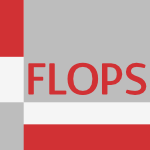 FLOPS-1999-VerbaetenS #analysis #logic programming #source code #termination #using
FLOPS-1999-VerbaetenS #analysis #logic programming #source code #termination #using- Termination Analysis of Tabled Logic Programs Using Mode and Type Information (SV, DDS), pp. 163–178.
 HCI-CCAD-1999-MorimotoKY #collaboration #communication #interactive #video
HCI-CCAD-1999-MorimotoKY #collaboration #communication #interactive #video- Influence of interaction modes on a collaborative task and structure of dialogues in video communication (KM, TK, AY), pp. 212–216.
 HCI-CCAD-1999-TsuchiyaHMH #estimation
HCI-CCAD-1999-TsuchiyaHMH #estimation- Estimation of plant operator’s cognitive modes based on the cognition model (KT, YH, HM, EH), pp. 1306–1310.
 HCI-EI-1999-ZhangRD #comparison #multi
HCI-EI-1999-ZhangRD #comparison #multi- A Comparison of Multi-modal Combination Modes for The Map System (GZ, XR, GD), pp. 750–754.
 AdaEurope-1999-RealW #multi #protocol #realtime
AdaEurope-1999-RealW #multi #protocol #realtime- The Ceiling Protocol in Multi-moded Real-Time Systems (JR, AJW), pp. 275–286.
 SEKE-1999-WieserHS #experience
SEKE-1999-WieserHS #experience- Push of Pull: Two Cognitive Modes of Systematic Experience Transfer at DaimlerChrysler (EW, FH, KS), pp. 186–204.
 LOPSTR-1999-SmausHK #analysis #logic programming #source code
LOPSTR-1999-SmausHK #analysis #logic programming #source code- Mode Analysis Domains for Typed Logic Programs (JGS, PMH, AK), pp. 82–101.
 ESOP-1998-MaraninchiR #named
ESOP-1998-MaraninchiR #named- Mode-Automata: About Modes and States for Reactive Systems (FM, YR), pp. 185–199.
 ALP-PLILP-1998-SmausHK #logic programming #source code #termination
ALP-PLILP-1998-SmausHK #logic programming #source code #termination- Termination of Logic Programs with block Declarations Running in Several Modes (JGS, PMH, AK), pp. 73–88.
 LOPSTR-1998-SmausHK #fault #logic programming #multi #source code #using
LOPSTR-1998-SmausHK #fault #logic programming #multi #source code #using- Preventing Instantiation Errors and Loops for Logic Programs with Multiple Modes Using block Declarations (JGS, PMH, AK), pp. 289–307.
 SAC-1998-MurthyK #modelling #network #programming #tool support
SAC-1998-MurthyK #modelling #network #programming #tool support- Integrated network computing models, programming modes and software tools (VKM, EVK), pp. 551–557.
 EDTC-1997-HendricxC #approach #verification
EDTC-1997-HendricxC #approach #verification- A symbolic core approach to the formal verification of integrated mixed-mode applications (SH, LJMC), pp. 432–436.
 CHI-1997-OviattDK #human-computer #integration #interactive #multimodal
CHI-1997-OviattDK #human-computer #integration #interactive #multimodal- Integration and Synchronization of Input Modes during Multimodal Human-Computer Interaction (SLO, ADA, KK), pp. 415–422.
 CHI-1997-VolbrachtDSF #3d #effectiveness #how #question
CHI-1997-VolbrachtDSF #3d #effectiveness #how #question- How Effective are 3D Display Modes? (SV, GD, KS, GF), pp. 540–541.
 HCI-CC-1997-WestlanderBH #development #information management #interactive #process
HCI-CC-1997-WestlanderBH #development #information management #interactive #process- Modes of Interaction Between Businesses and R&D Project Teams in Cognitive Engineering and Information Systems Development. Success and Failures in the Process of Field Studies (GW, TB, SH), pp. 793–796.
 ICLP-1997-SmausHK #analysis #logic programming #source code
ICLP-1997-SmausHK #analysis #logic programming #source code- Domain Construction for Mode Analysis of Typed Logic Programs (JGS, PMH, AK), p. 418.
 ILPS-1997-TanL #analysis #logic programming #precise #recursion #source code
ILPS-1997-TanL #analysis #logic programming #precise #recursion #source code- Recursive Modes for Precise Analysis of Logic Programs (JT, IPL), pp. 277–290.
 DAC-1996-KudvaGJ #distributed
DAC-1996-KudvaGJ #distributed- A Technique for Synthesizing Distributed Burst-mode Circuits (PK, GG, HMJ), pp. 67–70.
 DAC-1996-TodescoM #named #parallel #simulation
DAC-1996-TodescoM #named #parallel #simulation- Symphony: A Simulation Backplane for Parallel Mixed-Mode Co-Simulation of VLSI Systems (ARWT, THYM), pp. 149–154.
 ESOP-1996-RohwedderP #higher-order #logic programming #source code #termination
ESOP-1996-RohwedderP #higher-order #logic programming #source code #termination- Mode and Termination Checking for Higher-Order Logic Programs (ER, FP), pp. 296–310.
 ICPR-1996-UhlF #analysis #recognition
ICPR-1996-UhlF #analysis #recognition- Spatiotemporal signal analysis: recognition of interacting modes (CU, RF), pp. 55–59.
 JICSLP-1996-ChoU #concurrent #logic programming #source code
JICSLP-1996-ChoU #concurrent #logic programming #source code- Diagnosing Non-Well-Moded Concurrent Logic Programs (KC, KU), pp. 215–229.
 JICSLP-1996-Naish #declarative
JICSLP-1996-Naish #declarative- A Declarative View of Modes (LN), pp. 185–199.
 DAC-1995-FarrahiTS #memory management #segmentation
DAC-1995-FarrahiTS #memory management #segmentation- Memory Segmentation to Exploit Sleep Mode Operation (AHF, GET, MS), pp. 36–41.
 SAS-1995-RaoS #execution #prolog #source code
SAS-1995-RaoS #execution #prolog #source code- Unification-Free Execution of Well-Moded and Well-Typed Prolog Programs (MRKKR, RKS), pp. 243–260.
 PLILP-1995-MasseyT #analysis #array #comprehension
PLILP-1995-MasseyT #analysis #array #comprehension- Modes of Comprehension: Mode Analysis of Arrays and Array Comprehensions (BCM, ET), pp. 207–222.
 ICLP-1995-Hirata #correctness #haskell #proving #π-calculus
ICLP-1995-Hirata #correctness #haskell #proving #π-calculus- Proving Correctness of Translation from Moded Flat GHC to π-Calculus (KH), p. 818.
 LICS-1995-MarekNR #complexity #logic #reasoning
LICS-1995-MarekNR #complexity #logic #reasoning- Complexity of Normal Default Logic and Related Modes of Nonmonotonic Reasoning (VWM, AN, JBR), pp. 178–185.
 SAS-1994-HanusZ #analysis #functional #logic programming #source code
SAS-1994-HanusZ #analysis #functional #logic programming #source code- Mode Analysis of Functional Logic Programs (MH, FZ), pp. 26–42.
 ICLP-1994-BigotGD #logic programming #source code
ICLP-1994-BigotGD #logic programming #source code- Output Value Placement in Moded Logic Programs (PAB, DG, SKD), pp. 175–189.
 ICLP-1994-DumortierJ #towards
ICLP-1994-DumortierJ #towards- Towards a Practical Full Mode Inference System for CLP(H, N) (VD, GJ), pp. 569–583.
 ILPS-1994-RosenbluethP #logic programming #lr #parsing #source code
ILPS-1994-RosenbluethP #logic programming #lr #parsing #source code- LR Inference: Inference Systems for Fixed-Mode Logic Programs, Based on LR Parsing (DAR, JCP), pp. 439–453.
 DAC-1993-SiegelMD #automation #design
DAC-1993-SiegelMD #automation #design- Automatic Technology Mapping for Generalized Fundamental-Mode Asynchronous Designs (PS, GDM, DLD), pp. 61–67.
 ICDAR-1993-HonesL #documentation #string
ICDAR-1993-HonesL #documentation #string- Text string extraction within mixed-mode documents (FH, JL), pp. 655–659.
 SEKE-1993-ShinCY #prolog #source code #type inference
SEKE-1993-ShinCY #prolog #source code #type inference- Mode Based Type Inference for Prolog Programs (DS, YC, HY), pp. 239–243.
 CHI-1992-AraiYM
CHI-1992-AraiYM- A window system with leafing through mode: BookWindow (KA, TY, YM), pp. 291–292.
 JICSLP-1992-RouzaudN #prolog #type system
JICSLP-1992-RouzaudN #prolog #type system- Integrating Modes and Subtypes into a Prolog Type-Checker (YR, LNP), pp. 85–97.
 LOPSTR-1991-AlexandreBQ #logic programming #on the #source code #using
LOPSTR-1991-AlexandreBQ #logic programming #on the #source code #using- On Using Mode Input-output for Transforming Logic Programs (FA, KB, AQ), pp. 129–146.
 POPL-1989-YelickZ #logic programming #type system
POPL-1989-YelickZ #logic programming #type system- Moded Type Systems for Logic Programming (KAY, JLZ), pp. 116–124.
 DAC-1988-HillAHS #algorithm #fault #simulation
DAC-1988-HillAHS #algorithm #fault #simulation- A New Two Task Algorithm for Clock Mode Fault Simulation in Sequential Circuits (FJH, EA, WKH, GQS), pp. 583–586.
 STOC-1988-HalstenbergR #communication #on the
STOC-1988-HalstenbergR #communication #on the- On Different Modes of Communication (Extended Abstract) (BH, RR), pp. 162–172.
 JICSCP-1988-BruynoogheJ88 #abstract interpretation
JICSCP-1988-BruynoogheJ88 #abstract interpretation- An Instance of Abstract Interpretation Integrating Type and Mode Inferencing (MB, GJ), pp. 669–683.
 SIGMOD-1987-StempleMS #design #feedback #on the #transaction
SIGMOD-1987-StempleMS #design #feedback #on the #transaction- On the Modes and Meaning of Feedback to Transaction Designers (DWS, SM, TS), pp. 374–386.
 ICALP-1987-ChytilD
ICALP-1987-ChytilD- Panic Mode without Panic (MC, JD), pp. 260–268.
 ASPLOS-1987-ChowCHKW #how #question
ASPLOS-1987-ChowCHKW #how #question- How Many Addressing Modes are Enough? (FCC, SC, MIH, EK, LW), pp. 117–121.
 SLP-1986-DebrayW86 #automation #prolog #source code
SLP-1986-DebrayW86 #automation #prolog #source code- Automatic Mode Inference for Prolog Programs (SKD, DSW), pp. 78–88.
 DAC-1985-Lewis #hardware #simulation
DAC-1985-Lewis #hardware #simulation- A hardware engine for analogue mode simulation of MOS digital circuits (DML), pp. 345–351.
 DAC-1984-ChenLNS #generative
DAC-1984-ChenLNS #generative- The second generation motis mixed-mode simulator (CFC, CYL, HNN, PS), pp. 10–17.
 DAC-1984-DoshiSS #interactive #logic #multi
DAC-1984-DoshiSS #interactive #logic #multi- THEMIS logic simulator — a mix mode, multi-level, hierarchical, interactive digital circuit simulator (MHD, RBS, DMS), pp. 24–31.
 SIGIR-1984-Christodoulakis #development #framework
SIGIR-1984-Christodoulakis #development #framework- Framework for the Development of an Experimental Mixed-Mode Message System (SC), pp. 1–20.
 DAC-1980-AgrawalBKNP
DAC-1980-AgrawalBKNP- A mixed-mode simulator (VDA, AKB, PK, HNN, EPS), pp. 618–625.
 POPL-1975-Solomon
POPL-1975-Solomon- Modes, Values, and Expressions (MHS), pp. 149–159.
 POPL-1973-FischerF
POPL-1973-FischerF- Mode Modules as Representations of Domains (AEF, MJF), pp. 139–143.
 CASE-2015-LengWDC #fuzzy
CASE-2015-LengWDC #fuzzy DAC-2015-HanLKNL #framework #multi #optimisation #reduction
DAC-2015-HanLKNL #framework #multi #optimisation #reduction DAC-2015-SripadaP #approach #graph
DAC-2015-SripadaP #approach #graph DATE-2015-BortolottiMBRSB #monitoring #power management
DATE-2015-BortolottiMBRSB #monitoring #power management DATE-2015-LeleMB #case study #data flow
DATE-2015-LeleMB #case study #data flow DATE-2015-ZwergerG #detection #symmetry
DATE-2015-ZwergerG #detection #symmetry CHI-2015-LuL #gesture #mobile #performance
CHI-2015-LuL #gesture #mobile #performance CHI-2015-TungCYWC #automation #interactive #named
CHI-2015-TungCYWC #automation #interactive #named ICEIS-v1-2015-CarboneraA #algorithm #category theory #clustering #named
ICEIS-v1-2015-CarboneraA #algorithm #category theory #clustering #named ICML-2015-TristanTS #estimation #gpu #performance
ICML-2015-TristanTS #estimation #gpu #performance KDD-2015-ChakrabortyBSPY #classification #framework #learning #named #novel
KDD-2015-ChakrabortyBSPY #classification #framework #learning #named #novel SEKE-2015-NetoSZD #network #using
SEKE-2015-NetoSZD #network #using DAC-2014-QiuLX #performance #power management
DAC-2014-QiuLX #performance #power management DATE-2014-AzimCPF #communication #distributed #generative #multi #realtime
DATE-2014-AzimCPF #communication #distributed #generative #multi #realtime DATE-2014-JeongOSNS #parametricity #self
DATE-2014-JeongOSNS #parametricity #self DATE-2014-ParkKK #design #multi #synthesis
DATE-2014-ParkKK #design #multi #synthesis DATE-2014-SalunkheMB #analysis #data flow #modelling
DATE-2014-SalunkheMB #analysis #data flow #modelling VLDB-2014-YuYWLC #big data #classification #design #detection #power management
VLDB-2014-YuYWLC #big data #classification #design #detection #power management AFL-2014-FernauFH #distributed #finite #hybrid
AFL-2014-FernauFH #distributed #finite #hybrid ICML-c2-2014-PachecoZBS
ICML-c2-2014-PachecoZBS HPCA-2014-LoK #manycore
HPCA-2014-LoK #manycore CAV-2014-ChowdhuryJGD #monitoring #policy #privacy #runtime
CAV-2014-ChowdhuryJGD #monitoring #policy #privacy #runtime CBSE-2013-YinQCH #component
CBSE-2013-YinQCH #component CASE-2013-IsmailH #3d #anti #higher-order #using
CASE-2013-IsmailH #3d #anti #higher-order #using DAC-2013-AgrawalRHSPC #architecture #clustering #framework #multi
DAC-2013-AgrawalRHSPC #architecture #clustering #framework #multi DAC-2013-Flynn #power management
DAC-2013-Flynn #power management DAC-2013-TangAP #communication #configuration management #multi #pipes and filters
DAC-2013-TangAP #communication #configuration management #multi #pipes and filters DATE-2013-FarisiBCS #automation #implementation #multi
DATE-2013-FarisiBCS #automation #implementation #multi DATE-2013-KahngKP #power management #reduction
DATE-2013-KahngKP #power management #reduction DATE-2013-LorenteVSPCLD #power management #ram
DATE-2013-LorenteVSPCLD #power management #ram DATE-2013-NegreanKE #analysis #manycore
DATE-2013-NegreanKE #analysis #manycore ICDAR-2013-ShivramRSG #dataset #named
ICDAR-2013-ShivramRSG #dataset #named SEFM-2013-SuryadevaraSMP #behaviour #using #verification
SEFM-2013-SuryadevaraSMP #behaviour #using #verification CHI-2013-OfekIS
CHI-2013-OfekIS CHI-2013-SerranoLG #gesture
CHI-2013-SerranoLG #gesture DHM-SET-2013-MeryS
DHM-SET-2013-MeryS ICEIS-v3-2013-SzirbikB #architecture #network
ICEIS-v3-2013-SzirbikB #architecture #network ICML-c1-2013-ChenK #adaptation #learning #optimisation
ICML-c1-2013-ChenK #adaptation #learning #optimisation ICML-c3-2013-ChattopadhyayFDPY #learning
ICML-c3-2013-ChattopadhyayFDPY #learning KDD-2013-WangY #learning #query
KDD-2013-WangY #learning #query KDIR-KMIS-2013-Ibarra-SanchezPO #analysis #case study #risk management #using
KDIR-KMIS-2013-Ibarra-SanchezPO #analysis #case study #risk management #using PADL-2013-0004R #implementation #on the #performance
PADL-2013-0004R #implementation #on the #performance RE-2013-DietrichA #interface #requirements
RE-2013-DietrichA #interface #requirements SAC-2013-SrivastavaSM #clustering #graph #using
SAC-2013-SrivastavaSM #clustering #graph #using LCTES-2013-LiJZHX #compilation #performance #power management
LCTES-2013-LiJZHX #compilation #performance #power management CBSE-2012-PopPOMB #co-evolution #component #network
CBSE-2012-PopPOMB #co-evolution #component #network CBSE-2012-YinCH #component #multi #towards
CBSE-2012-YinCH #component #multi #towards CASE-2012-CaoZF #approach #mobile #search-based
CASE-2012-CaoZF #approach #mobile #search-based CASE-2012-IsmailDH #higher-order #using
CASE-2012-IsmailDH #higher-order #using CASE-2012-KhanhTHH #fuzzy
CASE-2012-KhanhTHH #fuzzy CASE-2012-QuangR #approach #implementation
CASE-2012-QuangR #approach #implementation DATE-2012-NasseryO
DATE-2012-NasseryO DATE-2012-PourshaghaghiFG
DATE-2012-PourshaghaghiFG ICPR-2012-HardingHCLC #automation #detection #image
ICPR-2012-HardingHCLC #automation #detection #image ICPR-2012-SunLI #quality #scalability
ICPR-2012-SunLI #quality #scalability ICPR-2012-WidhalmNB #detection #smarttech
ICPR-2012-WidhalmNB #detection #smarttech ICPR-2012-YangLZC #image #learning #multi #retrieval
ICPR-2012-YangLZC #image #learning #multi #retrieval KDD-2012-ChattopadhyayWFDPY #probability
KDD-2012-ChattopadhyayWFDPY #probability REFSQ-2012-RaspotnigO #analysis #case study #diagrams #sequence chart
REFSQ-2012-RaspotnigO #analysis #case study #diagrams #sequence chart SAC-2012-SwainCNB #analysis #markov #performance #using
SAC-2012-SwainCNB #analysis #markov #performance #using CBSE-2011-DistefanoFGM #analysis #composition #multi #reliability #workflow
CBSE-2011-DistefanoFGM #analysis #composition #multi #reliability #workflow CASE-2011-BohlouliMBK #adaptation #fuzzy #mobile
CASE-2011-BohlouliMBK #adaptation #fuzzy #mobile CASE-2011-Gomez-GutierrezCRRG #linear
CASE-2011-Gomez-GutierrezCRRG #linear CASE-2011-SekerZ
CASE-2011-SekerZ DAC-2011-CevreroRSBIL #library #logic #power management #standard
DAC-2011-CevreroRSBIL #library #logic #power management #standard DAC-2011-HuangYX #multi #scheduling
DAC-2011-HuangYX #multi #scheduling DAC-2011-WalterKCK #capacity #multi
DAC-2011-WalterKCK #capacity #multi DATE-2011-MistryAFH #power management
DATE-2011-MistryAFH #power management DATE-2011-VatajeluF #analysis #in memory #memory management #robust
DATE-2011-VatajeluF #analysis #in memory #memory management #robust DRR-2011-EynardME #corpus #framework #navigation
DRR-2011-EynardME #corpus #framework #navigation HT-2011-JonesA #tool support
HT-2011-JonesA #tool support ICDAR-2011-WeberLSSSD #detection #evaluation #interface #multi #online
ICDAR-2011-WeberLSSSD #detection #evaluation #interface #multi #online CHI-2011-KellyG #interactive
CHI-2011-KellyG #interactive CHI-2011-OzencF #social #social media
CHI-2011-OzencF #social #social media HCI-MIIE-2011-LuMLW #interactive #pervasive #research
HCI-MIIE-2011-LuMLW #interactive #pervasive #research ICEIS-v1-2011-XiaoZTZC #network
ICEIS-v1-2011-XiaoZTZC #network ICEIS-v2-2011-LuoL #enterprise #research
ICEIS-v2-2011-LuoL #enterprise #research ICEIS-v3-2011-HuangZYZC
ICEIS-v3-2011-HuangZYZC ASPLOS-2011-DengMRWB #in memory #memory management #named #power management
ASPLOS-2011-DengMRWB #in memory #memory management #named #power management RTA-2011-Bahr #convergence #graph grammar
RTA-2011-Bahr #convergence #graph grammar CBSE-2010-FilieriGGM #analysis #component #multi #reliability
CBSE-2010-FilieriGGM #analysis #component #multi #reliability ECSA-2010-SuYZ #architecture #specification
ECSA-2010-SuYZ #architecture #specification CASE-2010-IslamL #distributed #hybrid
CASE-2010-IslamL #distributed #hybrid DAC-2010-CabeQS #power management
DAC-2010-CabeQS #power management DAC-2010-HsuPH #approach #data flow #modelling #physics #simulation
DAC-2010-HsuPH #approach #data flow #modelling #physics #simulation DAC-2010-SeomunSS #implementation #power management #synthesis
DAC-2010-SeomunSS #implementation #power management #synthesis DAC-2010-ZhangCTL #modelling #multi #performance #scalability #towards
DAC-2010-ZhangCTL #modelling #multi #performance #scalability #towards DATE-2010-EconomakosXKS #component #configuration management #synthesis
DATE-2010-EconomakosXKS #component #configuration management #synthesis DATE-2010-HuangX10a #constraints #energy #multi #reliability #scheduling
DATE-2010-HuangX10a #constraints #energy #multi #reliability #scheduling DATE-2010-JungP #network #nondeterminism #optimisation #power management
DATE-2010-JungP #network #nondeterminism #optimisation #power management DATE-2010-LazzariFMC #multi
DATE-2010-LazzariFMC #multi DATE-2010-LungZCC #optimisation
DATE-2010-LungZCC #optimisation DATE-2010-ShafiqueMH #adaptation #complexity #reduction #using #video
DATE-2010-ShafiqueMH #adaptation #complexity #reduction #using #video ICALP-v1-2010-GreveJLT #approximate #bound
ICALP-v1-2010-GreveJLT #approximate #bound CIKM-2010-WongWWC #database #scalability
CIKM-2010-WongWWC #database #scalability ICML-2010-LiuY #graph #robust
ICML-2010-LiuY #graph #robust SEKE-2010-WangPACC #analysis #automation #process
SEKE-2010-WangPACC #analysis #automation #process SEKE-2010-Yeh #animation #human-computer #interactive #learning
SEKE-2010-Yeh #animation #human-computer #interactive #learning SAC-2010-HarshN #approach #architecture #independence #multi #network
SAC-2010-HarshN #approach #architecture #independence #multi #network SAC-2010-Niu #energy #realtime #scalability
SAC-2010-Niu #energy #realtime #scalability FSE-2010-Johnson10a #research
FSE-2010-Johnson10a #research FSE-2010-Shokry #behaviour #synthesis #towards #using
FSE-2010-Shokry #behaviour #synthesis #towards #using DAC-2009-PlishkerSB #data flow #effectiveness #scheduling
DAC-2009-PlishkerSB #data flow #effectiveness #scheduling DAC-2009-SamiiEPC #embedded #multi #quality #synthesis
DAC-2009-SamiiEPC #embedded #multi #quality #synthesis DATE-2009-BordeHP #architecture #component #configuration management
DATE-2009-BordeHP #architecture #component #configuration management DATE-2009-DabiriVPS #energy #realtime
DATE-2009-DabiriVPS #energy #realtime DATE-2009-StoimenovPT #realtime #reliability #scheduling
DATE-2009-StoimenovPT #realtime #reliability #scheduling LOPSTR-2009-CzenkoE #flexibility #using
LOPSTR-2009-CzenkoE #flexibility #using SAC-2009-GohKCC #analysis #performance #scalability #video
SAC-2009-GohKCC #analysis #performance #scalability #video ASPLOS-2009-WellsCS #manycore #reliability
ASPLOS-2009-WellsCS #manycore #reliability CASE-2008-HajiAGDM #multi #resource management #scheduling
CASE-2008-HajiAGDM #multi #resource management #scheduling DAC-2008-HanSE #3d #equation #modelling
DAC-2008-HanSE #3d #equation #modelling DATE-2008-ElmqvistN #analysis #component #incremental #tool support
DATE-2008-ElmqvistN #analysis #component #incremental #tool support DATE-2008-MorgadoRR #configuration management #multi #standard
DATE-2008-MorgadoRR #configuration management #multi #standard SAS-2008-RuggieriM #constraints #linear #source code #type system
SAS-2008-RuggieriM #constraints #linear #source code #type system DLT-2008-Csuhaj-VarjuDV
DLT-2008-Csuhaj-VarjuDV KDD-2008-TangLZN #community #evolution #multi #network
KDD-2008-TangLZN #community #evolution #multi #network MoDELS-2008-ObataI #modelling #validation
MoDELS-2008-ObataI #modelling #validation SAC-2008-MartinsB #on the #realtime
SAC-2008-MartinsB #on the #realtime SAC-2008-SchobelP #case study #clustering #cpu #kernel #research #scheduling #using
SAC-2008-SchobelP #case study #clustering #cpu #kernel #research #scheduling #using DAC-2007-SeokHSB #analysis #design #optimisation
DAC-2007-SeokHSB #analysis #design #optimisation ICDAR-2007-WillemsV #approach #detection #interactive #network
ICDAR-2007-WillemsV #approach #detection #interactive #network DHM-2007-KuboTA
DHM-2007-KuboTA OCSC-2007-ChenY07a #collaboration #design #difference #industrial #learning
OCSC-2007-ChenY07a #collaboration #design #difference #industrial #learning OCSC-2007-GonzalezGC #development
OCSC-2007-GonzalezGC #development ICEIS-DISI-2007-Brunetto #information management #integration
ICEIS-DISI-2007-Brunetto #information management #integration SEKE-2007-GuD #component #embedded #execution #integration #multi
SEKE-2007-GuD #component #embedded #execution #integration #multi POPL-2007-PearlmutterS #higher-order #lazy evaluation #multi
POPL-2007-PearlmutterS #higher-order #lazy evaluation #multi CASE-2006-TranNKHF #approach #low level #robust
CASE-2006-TranNKHF #approach #low level #robust CASE-2006-ZhangYZ #fault tolerance
CASE-2006-ZhangYZ #fault tolerance DATE-2006-AlmukhaizimM #concurrent #detection #fault
DATE-2006-AlmukhaizimM #concurrent #detection #fault DATE-DF-2006-ChengL #multi
DATE-DF-2006-ChengL #multi CHI-2006-HinckleyGBSAC #multi
CHI-2006-HinckleyGBSAC #multi CIKM-2006-AnhM #query
CIKM-2006-AnhM #query ICML-2006-HoiJZL #classification #image #learning
ICML-2006-HoiJZL #classification #image #learning ICPR-v1-2006-ArandjelovicC #classification #set #using
ICPR-v1-2006-ArandjelovicC #classification #set #using ICPR-v1-2006-HouZS #estimation #matrix
ICPR-v1-2006-HouZS #estimation #matrix ICPR-v1-2006-Lampert #machine learning #video
ICPR-v1-2006-Lampert #machine learning #video ICPR-v2-2006-HeW #composition #empirical #image
ICPR-v2-2006-HeW #composition #empirical #image ICPR-v4-2006-LienY #performance #predict #using
ICPR-v4-2006-LienY #performance #predict #using DAC-2005-AbdollahiFP #effectiveness
DAC-2005-AbdollahiFP #effectiveness DATE-2005-AlmukhaizimM #concurrent #detection #fault
DATE-2005-AlmukhaizimM #concurrent #detection #fault ICDAR-2005-WillemsRV #detection #online #recognition
ICDAR-2005-WillemsRV #detection #online #recognition DLT-J-2004-Freund05 #array #string
DLT-J-2004-Freund05 #array #string CIAA-2005-PodlovchenkoRZ #equivalence #on the #problem #source code
CIAA-2005-PodlovchenkoRZ #equivalence #on the #problem #source code IFM-2005-GrunskeLYW #analysis #automation #behaviour #design #specification
IFM-2005-GrunskeLYW #analysis #automation #behaviour #design #specification CHI-2005-LiHGL #analysis #user interface
CHI-2005-LiHGL #analysis #user interface ICEIS-v3-2005-MenkhausA #analysis #embedded #metric
ICEIS-v3-2005-MenkhausA #analysis #embedded #metric ICEIS-v5-2005-LeR #learning #named
ICEIS-v5-2005-LeR #learning #named PPDP-2005-GuoJGL #optimisation
PPDP-2005-GuoJGL #optimisation SAC-2005-GuoJ #logic programming #source code
SAC-2005-GuoJ #logic programming #source code DLT-2004-Freund #array #string
DLT-2004-Freund #array #string CAiSE-2004-IgnatN #collaboration #documentation #multi #named
CAiSE-2004-IgnatN #collaboration #documentation #multi #named ICPR-v4-2004-LiuWP #classification #composition #empirical
ICPR-v4-2004-LiuWP #classification #composition #empirical LOPSTR-2004-Lopez-GarciaBH #analysis #logic programming #source code #using
LOPSTR-2004-Lopez-GarciaBH #analysis #logic programming #source code #using PADL-2004-MoralesCH #c #compilation #prolog #using
PADL-2004-MoralesCH #c #compilation #prolog #using DAC-2003-ChoiK #design #embedded #layout #memory management #performance
DAC-2003-ChoiK #design #embedded #layout #memory management #performance DAC-2003-LiXC #architecture #modelling #optimisation #power management #scalability
DAC-2003-LiXC #architecture #modelling #optimisation #power management #scalability DATE-2003-ChiouBR #multi #power management #synthesis
DATE-2003-ChiouBR #multi #power management #synthesis DATE-2003-KrausP #flexibility #named #synthesis
DATE-2003-KrausP #flexibility #named #synthesis DATE-2003-SchmitzAE #co-evolution #design #embedded #energy #execution #multi
DATE-2003-SchmitzAE #co-evolution #design #embedded #energy #execution #multi VLDB-2003-HalversonBKKRTVWND #query #xml
VLDB-2003-HalversonBKKRTVWND #query #xml ICALP-2003-HromkovicS #automaton #comparison #multi
ICALP-2003-HromkovicS #automaton #comparison #multi SEKE-2003-Agren #concept #database #named #performance
SEKE-2003-Agren #concept #database #named #performance CGO-2003-EcksteinS
CGO-2003-EcksteinS HPCA-2003-IbrahimBR #execution #multi
HPCA-2003-IbrahimBR #execution #multi ICLP-2003-GuoG
ICLP-2003-GuoG DATE-2002-ChelceaNBE #synthesis
DATE-2002-ChelceaNBE #synthesis ICPR-v3-2002-BoomgaardW #analysis #equivalence #estimation #on the #robust
ICPR-v3-2002-BoomgaardW #analysis #equivalence #estimation #on the #robust PPDP-2002-OvertonSS #analysis #constraints
PPDP-2002-OvertonSS #analysis #constraints DAC-2001-DanielSW #analysis #performance #using
DAC-2001-DanielSW #analysis #performance #using DAC-2001-YalcinPMBSH #dependence #using
DAC-2001-YalcinPMBSH #dependence #using DATE-2001-LechnerRH #comprehension #requirements #towards
DATE-2001-LechnerRH #comprehension #requirements #towards ESOP-2001-BossiERS #logic programming #scheduling #semantics #source code #termination
ESOP-2001-BossiERS #logic programming #scheduling #semantics #source code #termination RE-2001-Voas
RE-2001-Voas HPCA-2001-DelaluzKVSI #energy #hardware #using
HPCA-2001-DelaluzKVSI #energy #hardware #using DAC-2000-ShinKC #analysis #embedded #multi #performance #realtime
DAC-2000-ShinKC #analysis #embedded #multi #performance #realtime ICPR-v1-2000-AricaY #markov
ICPR-v1-2000-AricaY #markov TOOLS-ASIA-2000-MiaoYL #component
TOOLS-ASIA-2000-MiaoYL #component CC-2000-MaraninchiRR #implementation #named
CC-2000-MaraninchiRR #implementation #named FLOPS-1999-VerbaetenS #analysis #logic programming #source code #termination #using
FLOPS-1999-VerbaetenS #analysis #logic programming #source code #termination #using HCI-CCAD-1999-MorimotoKY #collaboration #communication #interactive #video
HCI-CCAD-1999-MorimotoKY #collaboration #communication #interactive #video HCI-CCAD-1999-TsuchiyaHMH #estimation
HCI-CCAD-1999-TsuchiyaHMH #estimation HCI-EI-1999-ZhangRD #comparison #multi
HCI-EI-1999-ZhangRD #comparison #multi AdaEurope-1999-RealW #multi #protocol #realtime
AdaEurope-1999-RealW #multi #protocol #realtime SEKE-1999-WieserHS #experience
SEKE-1999-WieserHS #experience LOPSTR-1999-SmausHK #analysis #logic programming #source code
LOPSTR-1999-SmausHK #analysis #logic programming #source code ESOP-1998-MaraninchiR #named
ESOP-1998-MaraninchiR #named ALP-PLILP-1998-SmausHK #logic programming #source code #termination
ALP-PLILP-1998-SmausHK #logic programming #source code #termination LOPSTR-1998-SmausHK #fault #logic programming #multi #source code #using
LOPSTR-1998-SmausHK #fault #logic programming #multi #source code #using SAC-1998-MurthyK #modelling #network #programming #tool support
SAC-1998-MurthyK #modelling #network #programming #tool support EDTC-1997-HendricxC #approach #verification
EDTC-1997-HendricxC #approach #verification CHI-1997-OviattDK #human-computer #integration #interactive #multimodal
CHI-1997-OviattDK #human-computer #integration #interactive #multimodal CHI-1997-VolbrachtDSF #3d #effectiveness #how #question
CHI-1997-VolbrachtDSF #3d #effectiveness #how #question HCI-CC-1997-WestlanderBH #development #information management #interactive #process
HCI-CC-1997-WestlanderBH #development #information management #interactive #process ICLP-1997-SmausHK #analysis #logic programming #source code
ICLP-1997-SmausHK #analysis #logic programming #source code ILPS-1997-TanL #analysis #logic programming #precise #recursion #source code
ILPS-1997-TanL #analysis #logic programming #precise #recursion #source code DAC-1996-KudvaGJ #distributed
DAC-1996-KudvaGJ #distributed DAC-1996-TodescoM #named #parallel #simulation
DAC-1996-TodescoM #named #parallel #simulation ESOP-1996-RohwedderP #higher-order #logic programming #source code #termination
ESOP-1996-RohwedderP #higher-order #logic programming #source code #termination ICPR-1996-UhlF #analysis #recognition
ICPR-1996-UhlF #analysis #recognition JICSLP-1996-ChoU #concurrent #logic programming #source code
JICSLP-1996-ChoU #concurrent #logic programming #source code JICSLP-1996-Naish #declarative
JICSLP-1996-Naish #declarative DAC-1995-FarrahiTS #memory management #segmentation
DAC-1995-FarrahiTS #memory management #segmentation SAS-1995-RaoS #execution #prolog #source code
SAS-1995-RaoS #execution #prolog #source code PLILP-1995-MasseyT #analysis #array #comprehension
PLILP-1995-MasseyT #analysis #array #comprehension ICLP-1995-Hirata #correctness #haskell #proving #π-calculus
ICLP-1995-Hirata #correctness #haskell #proving #π-calculus LICS-1995-MarekNR #complexity #logic #reasoning
LICS-1995-MarekNR #complexity #logic #reasoning SAS-1994-HanusZ #analysis #functional #logic programming #source code
SAS-1994-HanusZ #analysis #functional #logic programming #source code ICLP-1994-BigotGD #logic programming #source code
ICLP-1994-BigotGD #logic programming #source code ICLP-1994-DumortierJ #towards
ICLP-1994-DumortierJ #towards ILPS-1994-RosenbluethP #logic programming #lr #parsing #source code
ILPS-1994-RosenbluethP #logic programming #lr #parsing #source code DAC-1993-SiegelMD #automation #design
DAC-1993-SiegelMD #automation #design ICDAR-1993-HonesL #documentation #string
ICDAR-1993-HonesL #documentation #string SEKE-1993-ShinCY #prolog #source code #type inference
SEKE-1993-ShinCY #prolog #source code #type inference CHI-1992-AraiYM
CHI-1992-AraiYM JICSLP-1992-RouzaudN #prolog #type system
JICSLP-1992-RouzaudN #prolog #type system LOPSTR-1991-AlexandreBQ #logic programming #on the #source code #using
LOPSTR-1991-AlexandreBQ #logic programming #on the #source code #using POPL-1989-YelickZ #logic programming #type system
POPL-1989-YelickZ #logic programming #type system DAC-1988-HillAHS #algorithm #fault #simulation
DAC-1988-HillAHS #algorithm #fault #simulation STOC-1988-HalstenbergR #communication #on the
STOC-1988-HalstenbergR #communication #on the JICSCP-1988-BruynoogheJ88 #abstract interpretation
JICSCP-1988-BruynoogheJ88 #abstract interpretation SIGMOD-1987-StempleMS #design #feedback #on the #transaction
SIGMOD-1987-StempleMS #design #feedback #on the #transaction ICALP-1987-ChytilD
ICALP-1987-ChytilD ASPLOS-1987-ChowCHKW #how #question
ASPLOS-1987-ChowCHKW #how #question SLP-1986-DebrayW86 #automation #prolog #source code
SLP-1986-DebrayW86 #automation #prolog #source code DAC-1985-Lewis #hardware #simulation
DAC-1985-Lewis #hardware #simulation DAC-1984-ChenLNS #generative
DAC-1984-ChenLNS #generative DAC-1984-DoshiSS #interactive #logic #multi
DAC-1984-DoshiSS #interactive #logic #multi SIGIR-1984-Christodoulakis #development #framework
SIGIR-1984-Christodoulakis #development #framework DAC-1980-AgrawalBKNP
DAC-1980-AgrawalBKNP POPL-1975-Solomon
POPL-1975-Solomon POPL-1973-FischerF
POPL-1973-FischerF









